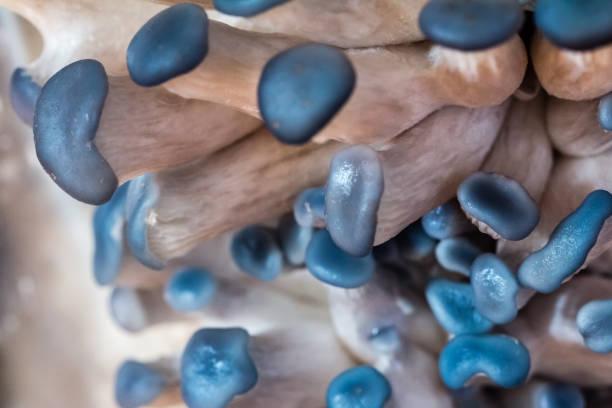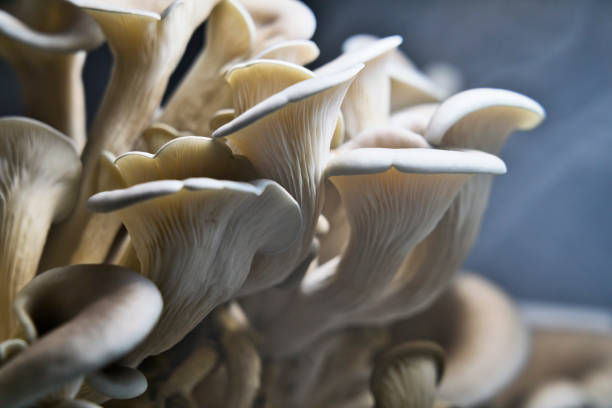Why Is Growing Blue Oyster Mushrooms So Damn Rewarding?

Let’s Be Real — Mushrooms Are Addictive (In the Best Way)
Once you start growing blue oyster mushrooms, there’s no going back. You think it’s just another garden project, but nope. These things grab hold of you. They grow fast, look wild, and taste like earthy velvet. Plus, watching them explode from a bag or bucket feels like witnessing nature’s magic trick. Honestly, it’s addictive — in a good way.
Blue oysters are the kind of mushrooms that reward even beginners. They’re forgiving. Resilient. And they put out beautiful, meaty clusters that make you look like a pro cultivator even if it’s your first grow.
What Makes Blue Oysters So Popular?
Everyone’s got a favorite mushroom. Some swear by lion’s mane for the brain boost, others chase the exotic glow of pink oysters. But the growing blue oyster mushrooms? It’s the workhorse.
They grow fast, don’t fuss about humidity too much, and can handle mistakes that would ruin fussier strains. You can grow them on straw, sawdust, coffee grounds — even old cardboard if you’re resourceful. They don’t demand fancy gear, though a bit of control over airflow and humidity does help. And when they bloom? You’ll get those dramatic, blue-gray shelves that almost look too good to eat. Almost.
Setting Up — Keep It Simple
You don’t need a sterile lab. You just need cleanliness, common sense, and a decent workspace. Start with a grow kit if you’re new. Kits take care of the hard stuff — sterile substrate, colonized grain spawn — and let you focus on getting the hang of fruiting.
If you’re diving in deeper, go bulk. That means grain spawn, substrate (straw or hardwood pellets are gold), and a fruiting chamber or grow tent. Keep airflow gentle, humidity high (85–95%), and temps around 18–24°C. That’s the sweet spot where blue oysters thrive. Mess it up a little, and they’ll usually forgive you. These mushrooms want to live.

Patience? Not Really Needed
Growing blue oyster mushrooms isn’t like waiting for tomatoes. They move fast.
Once your grain spawn colonizes the substrate, give it a week or so and — boom — white mycelium takes over. You’ll spot small pinheads popping out before you even finish your morning coffee. In ideal conditions, fruiting kicks off within 5–10 days after full colonization. That’s one reason growers love this species: quick turnaround. You can literally go from inoculation to harvest in under three weeks if you’ve got your setup dialed in.
The Visual Payoff — Blue, Bold, and Beautiful
If you’ve never seen a blue oyster mushroom flush, brace yourself. They come out in dramatic waves, almost alien-looking — layers of caps curling upward, a rich steel-blue sheen that fades to grey as they mature.
And here’s the kicker: that color variation depends on light and temperature. Cooler temps make the blue pop. Warmer ones turn them silvery-gray. Either way, they look incredible. They’re also camera magnets. Plenty of growers (myself included) start taking more mushroom photos than selfies. It happens to everyone.
Getting Fancy — Experiment with the Melmac Mushroom Strain
Now, if blue oysters are the easy-going rockstars of the grow world, the melmac mushroom strain is their trippy cousin. It’s a mutation of the classic Penis Envy variety, known for thick stems and those wild, brainy caps. Melmacs need more care, sure. They’re slower. A little picky with temperature and airflow. But the reward? Potent fruits, visually insane, and absolutely premium in texture.
You don’t have to grow them side by side, but many growers experiment with both just to keep things exciting. Blue oysters give you volume and confidence. Melmac mushrooms give you challenge and pride.
Common Screw-Ups and How to Dodge Them
Let’s talk real talk. You will screw up at some point. Contamination is part of the journey. Green mold, black spots, weird smells — they’re like badges of initiation.
The trick is spotting them early. If you see fuzzy green (Trichoderma), chuck it. Don’t try to “save” it. Mold spreads faster than gossip. Wipe down your grow area with alcohol, wash hands, and start again.
Most contamination comes from bad hygiene or using unpasteurized substrate. So pasteurize your straw properly and keep your hands clean. It’s not rocket science, just consistent care.
Feeding and Fruiting — Don’t Overcomplicate It
Blue oyster mushrooms aren’t fussy eaters. They’ll munch on just about anything organic — straw, coffee, sawdust, even paper pulp. Just make sure the substrate is pasteurized and not soaking wet.
Keep light indirect but steady. They need light to form caps, but too much heat dries them out. Maintain that humidity and give them fresh air daily. That’s it. When the caps start flattening, harvest. Don’t wait until they’re fully open or they’ll drop spores everywhere. A clean twist or cut, and they’re ready for the pan.
Taste Test — Pure Umami Bomb
Here’s the reward. Blue oyster mushrooms are delicious. They’ve got that meaty chew that makes vegetarians grin and meat-lovers forget what they’re missing. Fry them with butter and garlic — they crisp like bacon. You can toss them in stir-fries, soups, or grill them whole. The stems are tender, not woody, and they soak up sauces beautifully.
Melmacs, on the other hand, aren’t culinary mushrooms — more of a specialty strain for advanced growers. But having both species in your grow rotation keeps things interesting. One for the plate, one for the lab.

Scaling Up — From Hobby to Side Hustle
Plenty of folks start growing blue oysters for fun and end up running small farms. Once you’ve nailed the process, scaling is surprisingly doable.
You can expand by adding more bags or upgrading to monotubs. Sell at local markets, restaurants, or directly online. Chefs love oyster mushrooms for their texture and presentation. If you’re consistent and clean, you can move from hobbyist to legit grower faster than you think. And yes, there’s real money in gourmet mushrooms.
Why Grow Your Own Instead of Buying?
Store-bought mushrooms are fine, sure. But they’re often old by the time you get them. Half the flavor’s gone, and you’re paying extra for packaging and shelf time.
Growing your own means freshness you can’t buy. You pick it, you eat it. Zero middleman. Zero mystery chemicals. Just clean, healthy food you nurtured yourself.
Plus, it’s oddly satisfying watching a crop you started from spores turn into a full flush of life. It’s grounding. Honest.
The Final Word — Grow, Learn, Repeat
There’s no perfect grower. Every batch teaches you something new. Maybe your humidity was off. Maybe your substrate was too dry. You fix it, you grow again, you get better.
That’s what makes growing blue oyster mushrooms such a rewarding habit. It’s fast, forgiving, and visually satisfying. Add in strains like melmac, and you’ve got a mix of practicality and adventure that keeps the passion alive.
So stop reading and start growing. Seriously. Grab a kit or some spawn and dive in.
Visit Lady Hyphae to start your first grow — or your next big harvest.
FAQs About Growing Blue Oyster Mushrooms
How long does it take to grow blue oyster mushrooms?
Usually 3–4 weeks from start to harvest. Colonization takes around 10 days, and fruiting happens fast — often in under a week once pins form.
What’s the best substrate for blue oyster mushrooms?
Pasteurized straw or hardwood sawdust pellets work best. They hold moisture well and give the mushrooms plenty of nutrition.
How do I know when to harvest?
When the edges of the caps start to flatten out. Don’t wait until they curl upwards — that means they’re overripe and spore-heavy.
Can I grow blue oysters and melmac mushrooms together?
Yes, but keep them in separate fruiting spaces if possible. Blue oysters love high humidity, while melmacs prefer slightly drier, cleaner air.
Why do my mushrooms look thin and pale?
Usually it’s too little fresh air or too much CO₂. Crack the tent open a bit or add more ventilation. Mushrooms need to breathe just like us.
- AI
- Vitamins
- Health
- Admin/office jobs
- News
- Art
- Causes
- Crafts
- Dance
- Drinks
- Film
- Fitness
- Food
- Jogos
- Gardening
- Health
- Início
- Literature
- Music
- Networking
- Outro
- Party
- Religion
- Shopping
- Sports
- Theater
- Wellness


